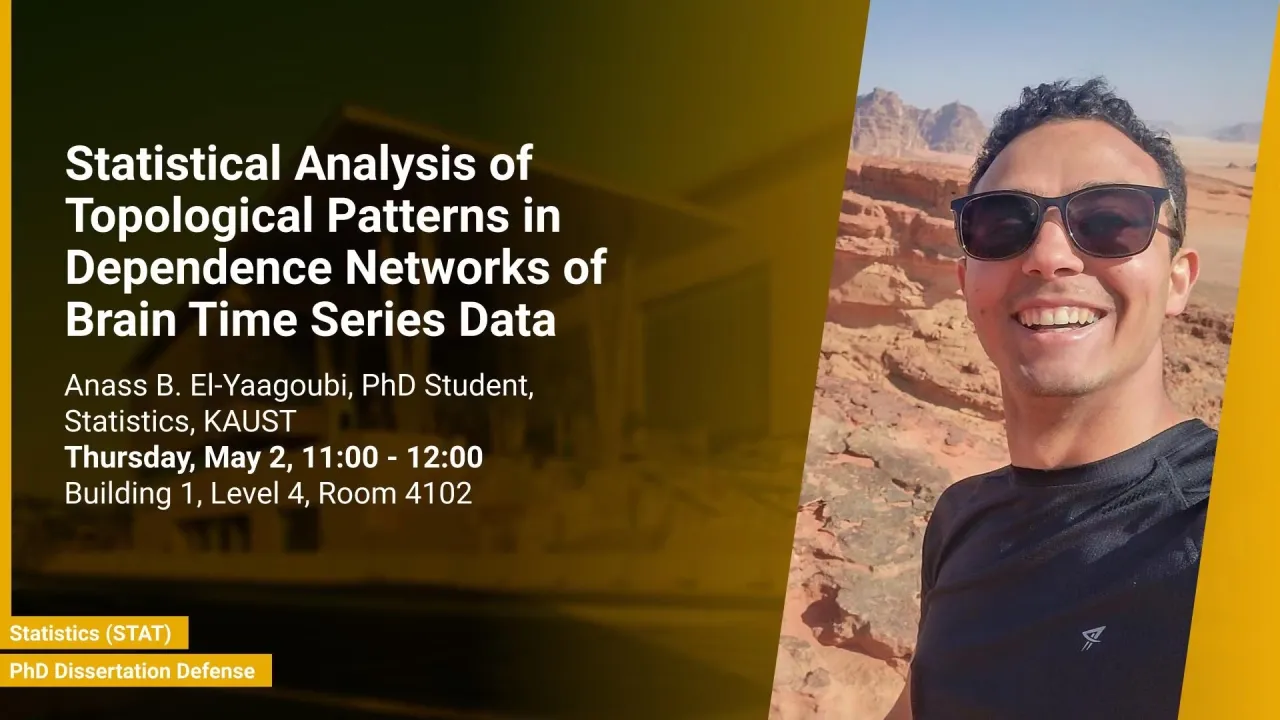
Statistical Analysis of Topological Patterns in Dependence Networks of Brain Time Series Data
B1 L4 R4102
Given the complex nature of brain signals and the challenges involved in estimating its dependence and analyzing the emerging topological patterns, this dissertation introduces innovative statistical tools designed to explore both the functional and effective connectivity within brain networks. It sheds light on frequency-specific patterns in ADHD subjects and introduces a novel approach for examining the hierarchical structure of brain regions during seizures. Our work provides a novel perspective on the organization of brain networks and presents insight into how various conditions influence their complex structure.
Overview
Abstract
The advancement of brain imaging techniques in recent decades has transformed neuroimaging into a cornerstone of neuroscience research. With these evolving technologies becoming more powerful and accessible, there is an increasing demand for innovative statistical models and methods to analyze neuroimaging data effectively. The analysis of patterns in functional and effective brain connectivity is a critical aspect of neuroscience, particularly concerning their association with specific neurological conditions and disorders. However, this task is complicated by the inherent non-stationarity of brain signals, posing significant challenges in accurately estimating and analyzing brain dependence networks. In response to these challenges, our work introduces novel, efficient, and robust statistical methods for the estimation and analysis of brain dependence networks.
We contribute to the field by developing real-time estimation techniques for brain connectivity under non-stationary conditions, employing time-varying Vector Autoregressive (tv-VAR) models. Additionally, our approach to spectral topological data analysis (STDA) unveils new insights into the frequency-specific topological patterns of dependence networks. These patterns, previously unattainable with existing TDA methods, offer a deeper understanding of brain signal dynamics aligned with previous results in the literature. Moreover, we explore causal pathways in brain networks by applying the Hodge Decomposition Theorem. This approach allows us to leverage TDA techniques to analyze effective brain connectivity, thus enhancing our understanding of oriented neural interactions, especially during epileptic seizures.
Brief Biography
Anass B. El Yaagoubi is a Ph.D. candidate in the Biostatistics group under the supervision of Professor Hernando Ombao. He holds a Master of Engineering from the National Institute of Applied Sciences of Rouen Normandie in Information Systems Architecture, and a Master of Science from Normandie University in Data Science and Engineering. Since joining Professor Ombao's BIOSTATS research group in spring 2019, Anass has focused on addressing complex statistical problems within neuroscience. His research is centered on the development and application of statistical topological data analysis methods, aimed at uncovering complex patterns in the dependence networks of time series data.

